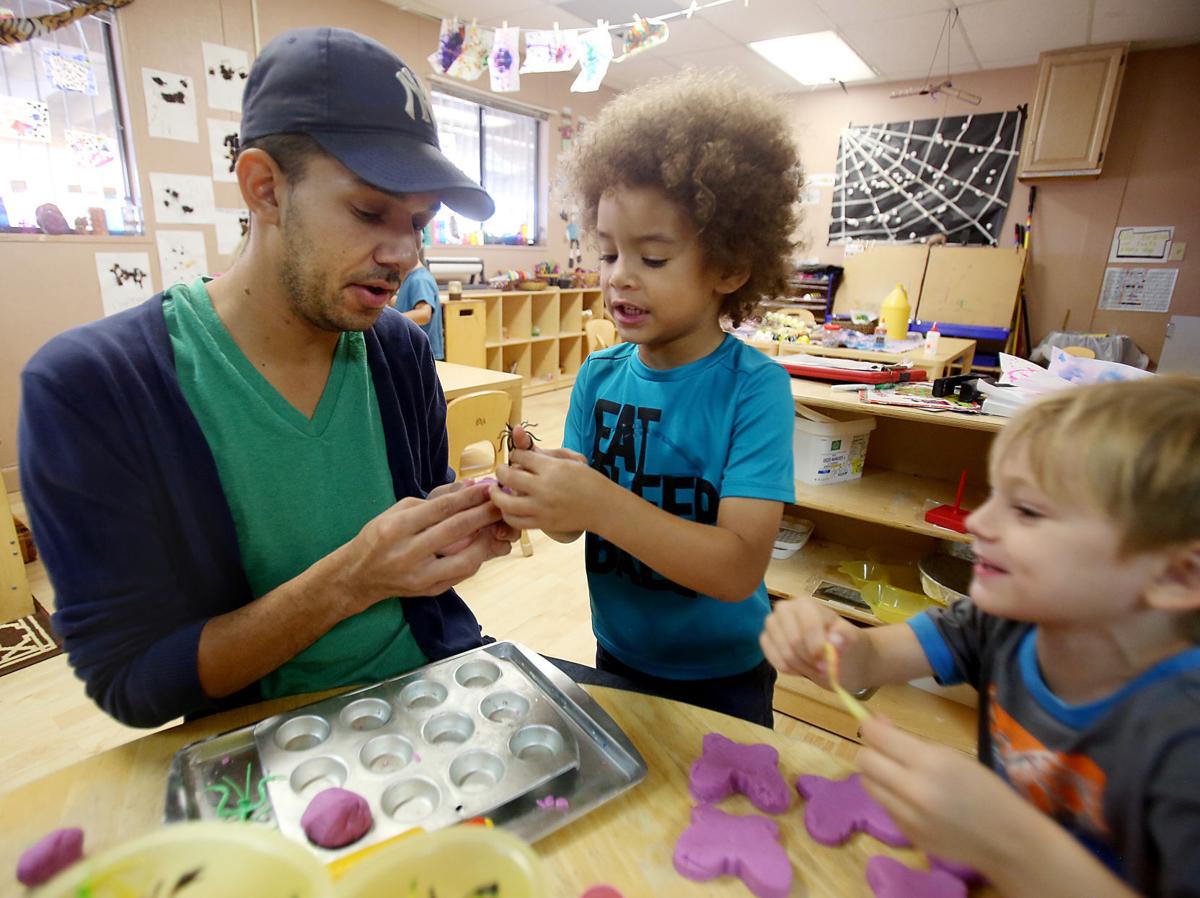The number of Pima County children enrolled in quality early-education programs has gone up, and that’s a good thing.
“Research tells us that 90 percent of a child’s brain is formed by age 5,” said Amanda Kucich, senior director of Cradle to Career Partnership, an organization dedicated to improving educational outcomes for all Pima County children. “Those are critical years of laying architecture for the brain that’s going to serve them for the rest of their lives.”
In 2016, the number of 3- and 4-year-old children enrolled in quality pre-K programs rose to 20.6 percent — up from 16.4 percent in 2015. That works out to 700 more children having access to a high-quality early education.
“On the flip side, only 20.6 percent are getting a high-quality program,” Kucich said. “We have a long way to go.”
Characteristics of high-quality child care and preschool settings include teachers and caregivers who have expertise with children ages 5 and younger, and learning environments that nurture emotional, social and academic development.
Not only are more children enrolled in high-quality programming, more of the educators responsible for teaching them have degrees in early-childhood education — a contributing indicator to kindergarten readiness.
In 2016, 71 degrees were awarded from the University of Arizona and Pima Community College in early-childhood education, compared with 56 in 2014.
“As this number continues to increase, so should the number of 3- and 4-year-olds with access to high-quality education,” Kucich said.
COMMUNITY IMPACT
Cradle to Career, or C2C, released its first Community Impact Report with findings on how well Pima County is doing in supporting more than 341,000 children and young adults in education at a news conference Thursday.
The organization launched publicly about a year ago to identify what is and is not working in education, with a mission to prepare every child for “success in school and life,” said Jon Kasle, co-chair of Cradle to Career and vice president of communications and public affairs at Raytheon.
“We are using data to find the bright spots, those places where individual teachers or schools have found something that works in achieving our shared goals,” said Steve Holmes, Sunnyside Unified School District superintendent. “We have many of those bright spots but without a system to identify them and lift them up for everyone, they remain hidden isolated pockets only benefiting a few students. ... As we look at scale, we want to replicate what we believe are best practices we know can lead to greater outcomes communitywide.”
The Cradle to Career Partnership consists of more than 280 people and 100 organizations working to improve educational outcomes for youth. The report includes shared data from seven partner school districts: Amphitheater, Flowing Wells, Marana, Pima JTED, Sahuarita, Sunnyside and Tucson Unified.
The partnership has created “change networks,” mini-coalitions of practitioners on the ground — teachers, nonprofit leaders, support professionals — working to assemble plans of action to address seven focus areas: kindergarten readiness, early-grade literacy, middle school math, high school graduation, postsecondary education success, career attainment and re-engagement of unenrolled youth.
MAKING STRIDES
There was a modest improvement of 1 percentage point in the area of early literacy, climbing from 40 to 41 percent of third-graders reading at grade level.
“Third-grade reading is an important milestone,” Kucich said. “This is where a child transitions from learning to read to reading to learn.”
State test scores show the achievement gap in the area of third-grade reading is narrowing, Kucich said.
“Specifically between black and white students, decreased 5 percentage points and 3 points between Native American and white students,” Kucich said. “This is central to our work. ... We have to reduce disparities if we are going to have true success in our county.”
C2C is uncertain what led to the improvement in third-grade reading but says it may be related to schools becoming more familiar with the AzMERIT test first administered in 2015.
The partnership is studying a strategy that Amphitheater Public Schools has implemented in one of its elementary schools in which each kindergarten student is paired with a Reading Seed coach. The school has seen such good results that the district is going to implement the program in another elementary school.
If it’s sustainable, C2C hopes to get the program implemented in more schools.
The four-year high school graduation rate increased 3.4 percentage points from 70.9 percent in 2014 to 74.3 percent in 2015 — the most recent data available.
“What’s even more encouraging is the achievement gap between white and all students of color decreased 3.6 percentage points from 13.1 percent in 2014 to only 9.5 percent in 2015,” Kucich said. “There’s still a long way to go, but we’re on the right track.”
WORK AHEAD
Despite the improvement in graduation rates, there is still much to be concerned about.
“We have 1 in 4 not graduating in our high schools,” Holmes said. “That’s a concern.”
The Community Impact Report also shows about 17 percent of youth ages 16 to 24 are not working or in school.
“This is really troubling,” Kucich said. “That’s 25,000 young people. I hope that sits in your stomach for a minute. ... There’s a lot of work to be done.”
To address the issue, the Partnership created the Youth on the Rise — Opportunity Change Network with the goal of decreasing the number of disconnected youth to 12.1 percent by the year 2020.
It has established a Re-Engagement Center, also known as REC, with Pima Prevention Partnership to provide a safe place for youth to receive ongoing support from a coach who connects them to educational, career and support services to stay re-engaged.





